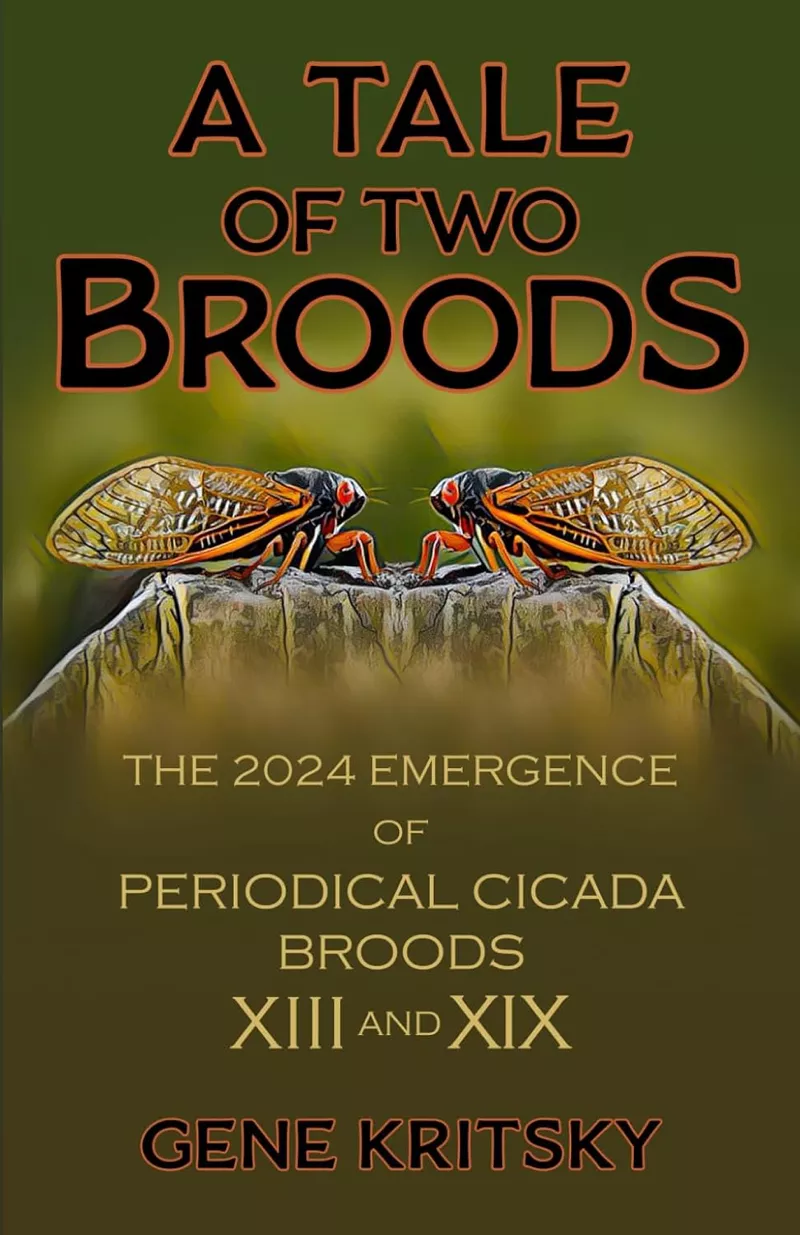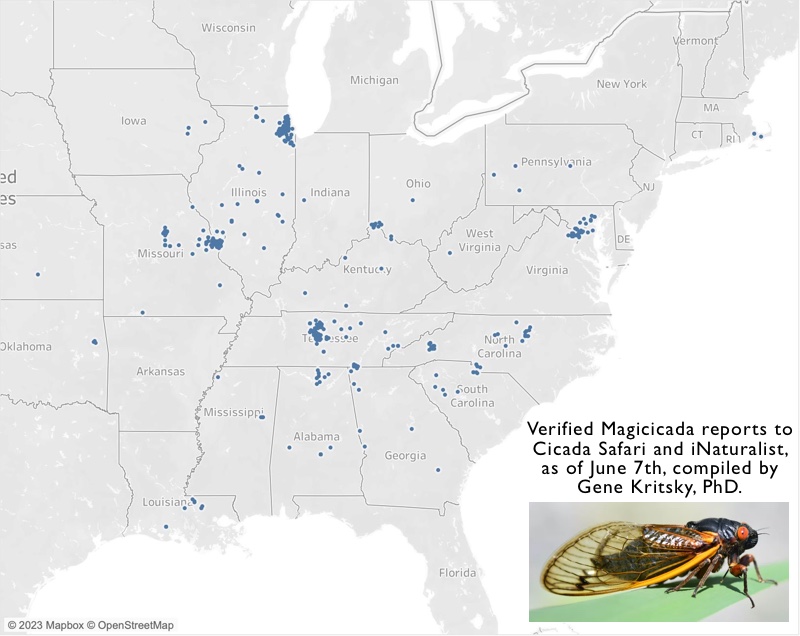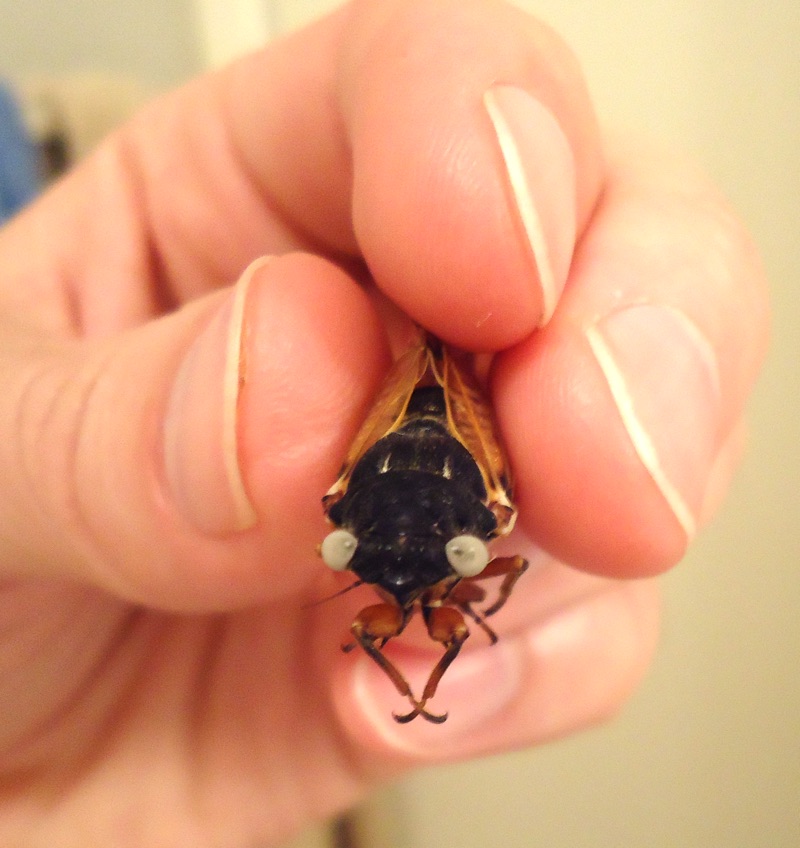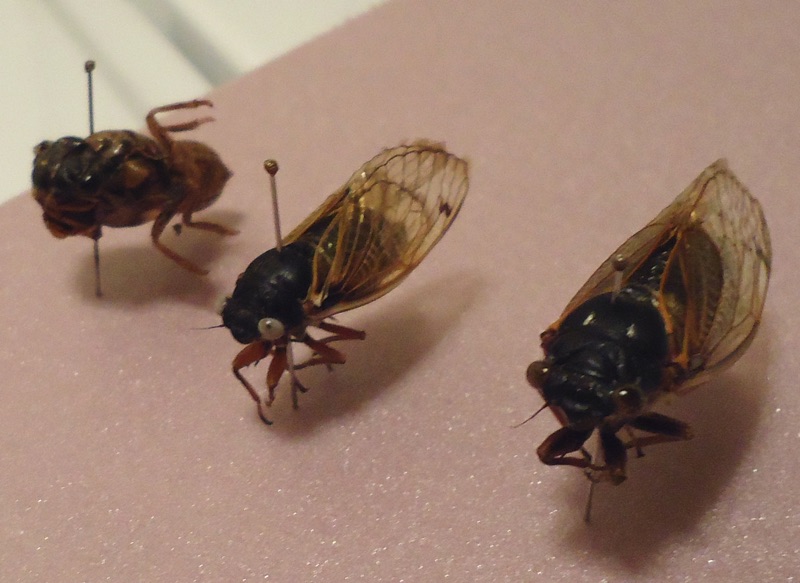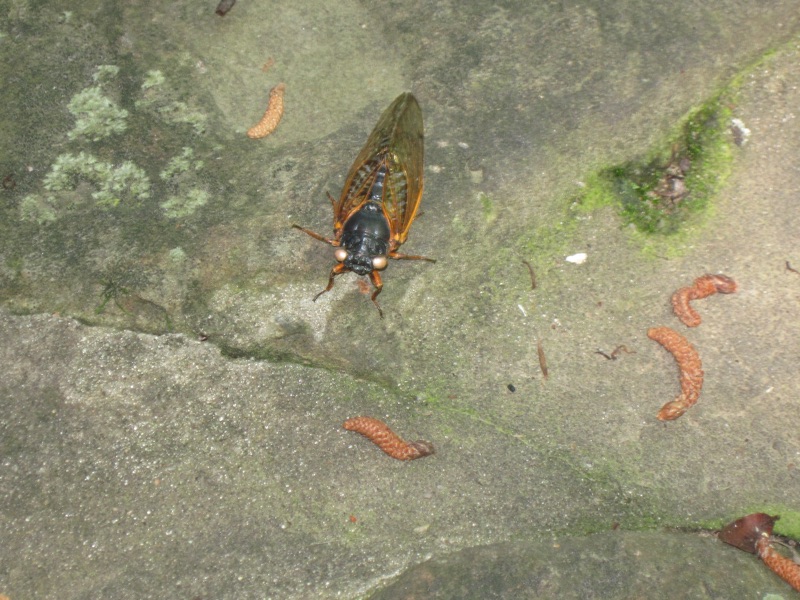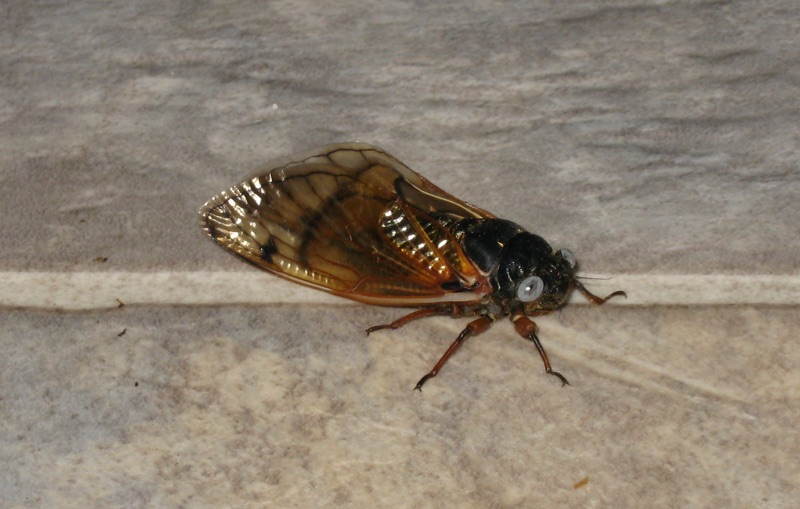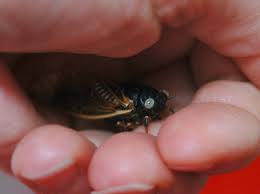Here is a quick way to tell the difference between the 7 periodical cicada species:
Download this chart. Click/tap for a larger version:
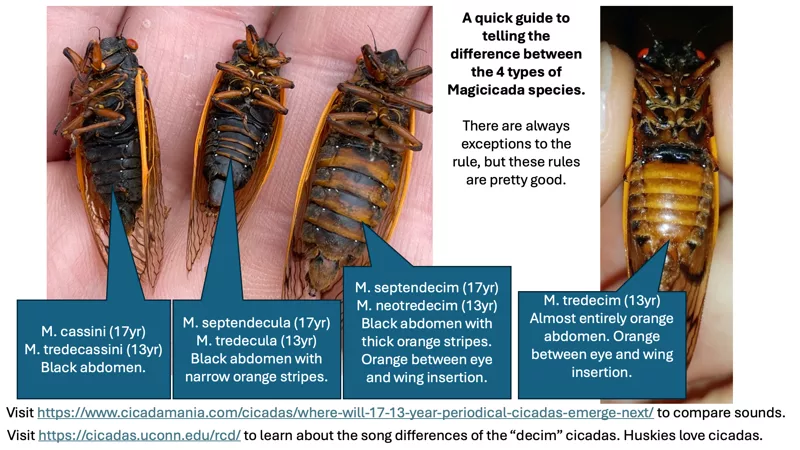
The songs of Magicicada cassini (17-year) and Magicicada tredecassini (13-year) are essentially identical:
M. cassini:
M. tredecassini:
The songs of Magicicada septendecula (17-year) and Magicicada tredecula (13-year) are essentially identical:
M. septendecula (©Joe Green):
M. tredecula:
The songs of Magicicada septendecim (17-year), M. neotredecim (13-year), and Magicicada tredecim (13-year) are essentially identical. M. neotredecim varies the sound of its call in the presence of M. tredecim.
M. septendecim:
M. neotredecim (© Insect Singers)
M. tredecim (© Insect Singers)
And/or watch this video:
Then read this and listen to the sound files on the page: Where will 17 & 13 Year Periodical Cicada Broods emerge next?

